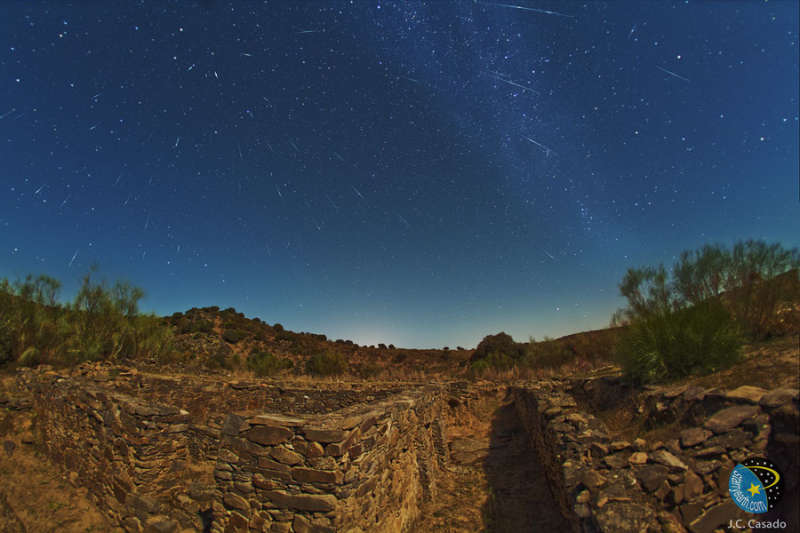Credit & Copyright: Juan Carlos Casado
(TWAN)
Explanation:
What are those streaks in the sky?
They're meteors from the
Draconids
meteor shower that peaked earlier this month.
The above composite image captured numerous meteor streaks over 90 minutes above
the Celtic ruins of Capote in
Badajoz province,
Spain.
The particles that caused these meteors were typically the size of a pebble and were
expelled long ago from the nucleus of
comet 21P/Giacobini-Zinner.
Most of the above meteors can be traced back to a single
radiant emanating from the
constellation of the Dragon
(Draco).
Reports from this year meteor shower indicate that the Draconids were
unusually
good this year with
activity
was concentrated around 8 pm
UT on October 8.
The most intense
Draconid meteor showers in recent history occurred in 1933 and 1946 when thousands
of meteors per hour were
recorded
as the Earth plowed through particularly dense streams of comet debris.
Although the Draconids occur
every October, it is usually difficult to know just how active each year's meteor
shower will be.
APOD Challenge:
How many meteors can you find on the above image?
1999 2000 2001 2002 2003 2004 2005 2006 2007 2008 2009 2010 2011 2012 2013 2014 2015 2016 2017 2018 2019 2020 2021 2022 2023 2024 2025 |
Январь Февраль Март Апрель Май Июнь Июль Август Сентябрь Октябрь Ноябрь Декабрь |
NASA Web Site Statements, Warnings, and Disclaimers
NASA Official: Jay Norris. Specific rights apply.
A service of: LHEA at NASA / GSFC
& Michigan Tech. U.
|
Публикации с ключевыми словами:
meteors - meteor shower - Draco - Дракониды - метеорный дождь - Метеорный поток
Публикации со словами: meteors - meteor shower - Draco - Дракониды - метеорный дождь - Метеорный поток | |
См. также:
Все публикации на ту же тему >> | |
